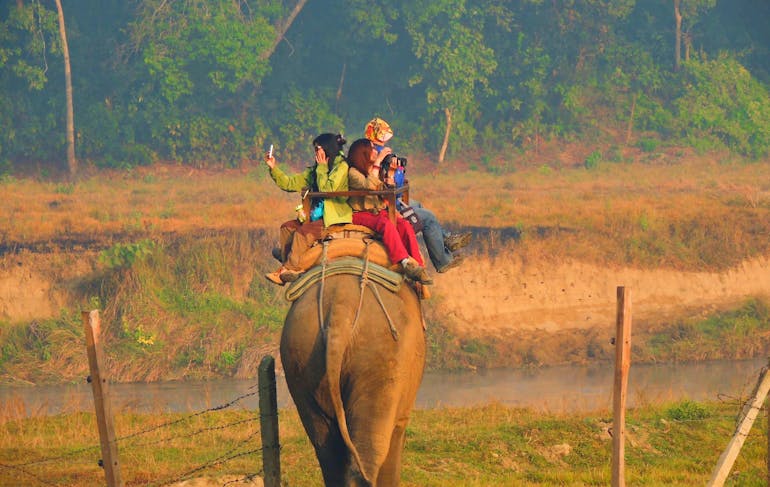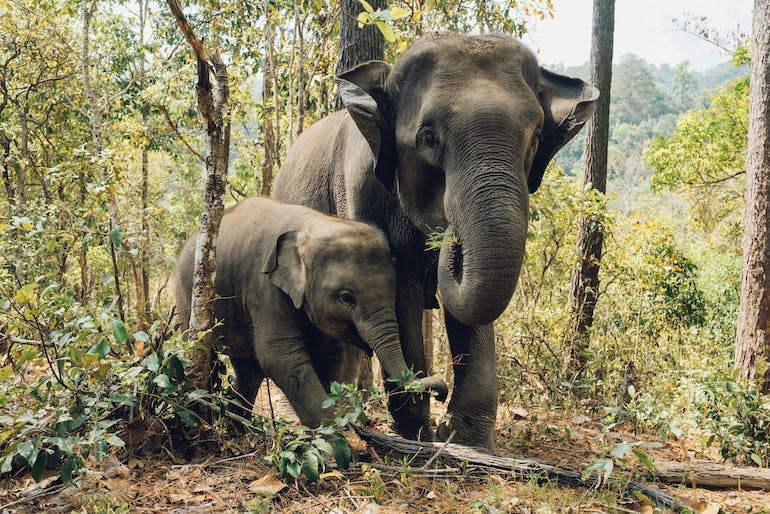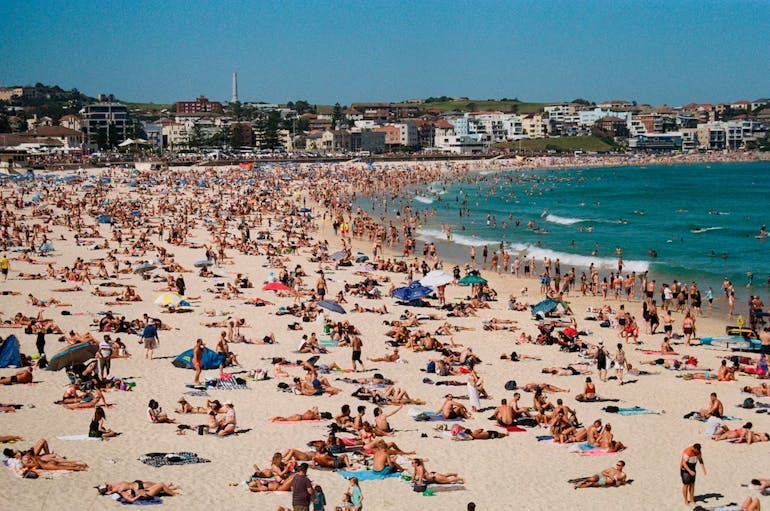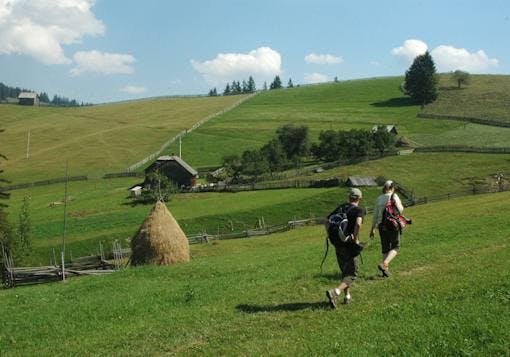4 Harmful Travel Mistakes to Avoid

12
May
4 Harmful Travel Mistakes to Avoid
Sustainable travel is becoming more widespread in recent years, and finding responsible activities, options, and tours (*wink wink*) are becoming easier than ever! That said, sometimes we partake in travel mistakes that seem harmless at first glance, only to later learn there’s actually more to the story.
Most of us have made, or will make, mistakes while traveling at one point or another. But fear not! Travel mistakes are nothing to be ashamed of—what’s most important is that we learn from them and correct them going forward. We’re here to help you do just that.
4 Harmful Travel Mistakes to Avoid
1. Harmful animal tourism
2. Voluntourism
3. Giving money to kids
4. Contributing to overtourism
Here’s our guide for how to spot potentially harmful practices, and what you can do instead. We hope this helps you avoid common travel missteps and make more responsible and informed choices in the future.
Travel Mistake #1: Harmful animal tourism

Animals have suffered immensely at the hands of tourism. This is undeniable. Responsible travel organizations, such as World Nomads, try to offer a clear-cut outline of these harmful activities:
Avoid any wildlife encounter that exploits an animal, or where there are signs of neglect or abuse. Removing animals that belong in the wild from their natural habitat, to be used for performance and entertainment, including fighting, is unacceptable.World Nomads
The complication is that less-than-benevolent animal encounters are not always obvious, even to well-intentioned tourists. This is, in part, because harm can be both direct and indirect.
Direct:
You may have seen pictures of smiling tourists riding an elephant, or posing next to sleeping tigers. Or, you may have heard of touristic culinary experiences such as eating puffin in Iceland. We would consider these to be direct examples.
It’s not a huge stretch of the imagination to understand why these activities aren’t ideal. (Elephants are “broken” into submission, tigers are drugged – not sleeping, and the puffin population is dramatically decreasing due to climate change and hunting.)
We would be remiss not to point out a couple of intricacies involved in this topic:
- Locals who are reliant on tourism may primarily earn their income from owning the animals or farms that tourists engage with. They may not have the skills or resources to earn income another (better) way. These types of considerations make it even harder for conscientious tourists to grapple with doing the ‘right thing.’
- Locals may have certain food preferences completely intertwined with their heritage, culture, and tradition, as is the case with the Icelandic puffin situation. (It’s worth noting that local regulations and modern eating habits have made big strides in this arena. Tourism, however, has hindered this progress.)
Indirect:
Indirect examples can be a bit more challenging to detect. One example of this could be swimming with whale sharks in the Philippines.
To ensure tourists can see the whale sharks day in and day out, they are attracted to the coast with food. Unfortunately, this practice is threatening the species. A dependency can develop on this food source, causing them to stop hunting on their own, and stray further from their natural ecosystems.
What you can do instead: Visit animal sanctuaries and conservation areas
There are tons of sanctuaries and sustainable alternatives to safely interact with wildlife while supporting the community and environment. Just be sure to thoroughly do your research, read reviews, and find sources you trust, to ensure the organization you select is responsible.
Here are a couple of sources we like:
Here are several organizations we like:
- The Elephant Nature Park in Thailand
- The David Sheldrick Wildlife Trust in Kenya (supporting elephants and rhinoceroses)
- La Tortuga Feliz in Costa Rica (for Sea Turtles)
Travel is also about managing expectations, which is all the more true when interacting with animals in their natural habitats. We are just visitors to the wildlife, therefore we shouldn’t try to control what we see in nature.
Remind yourself of everything else this trip has to offer–stunning landscapes, an educational opportunity, and the comfort of knowing the community, human and otherwise, will be better for it.
Travel Mistake #2: Voluntourism
Okay, hear us out! Some voluntourism can be a wonderful way to travel! However, many schemes, unfortunately, use these programs purely as a means of profit. (Read our in-depth voluntourism post.)
As with animals, travelers should be particularly cautious and careful with opportunities involving vulnerable groups, most notably, children.
Circumstances to consider:
- Artificial Needs: There have been instances in which orphanages are kept populated solely to attract paying volunteers. Obstructing the real needs of an organization, or creating artificial needs for the sake of volunteers’ payments, are very real scenarios to watch out for.
- Duration: One particular challenge for voluntourism, especially related to kids, is the transient nature of visitors coming and going. Even if you were to volunteer for a month–which might feel like a long time to you–it still can contribute to feelings of instability for the children you want to help.
What you can do instead: Find a responsible volunteer opportunity
There are tons of wonderful, authentic programs which do so much good across various areas of impact. If you do not have the time to volunteer for more than a month, consider opportunities that don’t focus on teaching or caring for children.
Some ideas: Farming, disaster relief, microfinance, and everything in between!
Here are several organizations we like:
- WWOOFing (Worldwide Opportunities on Organic Farms)
- The Red Cross
- Bankers Without Borders (Microfinance opportunities for people of various professional backgrounds, not just banking)
- Habitat for Humanity
There’s also a thorough round-up of reputable organizations here (just note that we haven’t had the chance to vet each of these companies ourselves yet).
Making sure you are working with a legitimate, responsible organization through prior research is key. Word of mouth is a good way to get recommendations and learn about common scams to avoid in your destination of choice.
Don’t be shy to ask around if you need more ideas, especially in travel groups like our very own Earthsiders community!
Travel Mistake #3: Giving money to kids
Travelers should be aware of common ways kids may be leveraged in tourist communities.
Especially in developing parts of the world, you may witness kids selling products or souvenirs, or asking for money. They may approach you in the street and can often be quite persistent.
If seeing these children pulls on your heartstrings, then you’re only human! This natural emotional response is precisely what they’re counting on.
Unfortunately, in many cases, this can be the stimulus for child exploitation.
The children will seldom be the ones to keep what you give them. Most of the time, they are forced to give up whatever they collect to an elder child, relative, or parent.
The scope of negative consequences for these kids is broad. At its worst, this model of pedaling children out to beg for money can resemble or lead to child gangs. In the ‘better’ scenarios, these kids are likely missing school to ‘work’, thus depriving them of an education that would help them more than your pocket change in the long run.
Ultimately, in giving kids money, tourists end up enabling this practice by providing a financial incentive for them to continue. So, while giving money to a child may at first seem harmless, or even positive, the long-term effects could be detrimental.
What you can do instead: Offer the right kind of support
It is important to ask ourselves how we can best help the children of these communities in the long term. Children contributing to the household are much more common in some parts of the world. It’s not necessarily harmful, and in fact, is sometimes necessary for survival. Thus, we must assess the situation.
A school-aged child directly asking for money is different from a teenager selling clothing they made themselves. Instead of making assumptions, consider asking questions directly. It could open an insightful dialogue, or even be an opportunity for both parties to practice language skills with native speakers.
Not knowing the right kind of support to provide is an easy mistake to make because determining a child’s circumstances can be impossible to truly know.
For travelers wanting to take more concrete action, consider donating time or money to programs that encourage education, teach vocational skills, and that already have a proven track record of positive change. This could include donating directly to a school or spending a year teaching English, which is in high demand around the world.
Travel Mistake #4: Well… traveling (contributing to overtourism)

Okay, maybe that was a bit dramatic.
Our point is: overtourism is one of the main things we should aim to avoid contributing to when traveling. For already-suffering destinations, whose future existence is in jeopardy, it’s the last thing they need.
It’s important to acknowledge the negative impact traveling can have on your destination. This article highlights some well-known places that have been shut down or altered to deal with overtourism. Perhaps more importantly, we should be aware of the positive impact not traveling can have on certain places.
Articles like this one are a bleak reminder that some beloved tourist destinations are like endangered species we’re on the brink of losing.
Unfortunately, what nearly all of these articles ask us to do next is the exact opposite action we should take.
Their message is one of urgency – ‘travel now, before it’s no longer there’. In reality, this is the biggest travel mistake we can make.
Instead of focusing on the immediacy of FOMO, we should be far more concerned with preserving these destinations’ long-term viability.
In some extreme examples, governments and environmental organizations may temporarily halt tourism altogether to allow an area to rehabilitate. In other places, like Hawaii, COVID has provided an opportunity to re-imagine how to integrate tourism back post-pandemic in a way that doesn’t smother the local ecosystems and culture.
Destinations don’t always take these measures though. It’s up to conscientious travelers to make the responsible choice themselves.
What you can do instead: Travel a bit less conventionally
As an American, I hope I will get the opportunity to see the Great Barrier Reef one day. Although, thinking about the impact of the flight alone makes it seem like an unconscionable decision. That, plus the pandemic, has led me to rethink my approach to travel and consider these alternatives:
1. Staycations and Domestic Tourism:
Most (if not all!) of our native countries offer plenty to see and experience. Increasing domestic tourism strives to find a balance between the economic and environmental pillars of sustainability.
International tourism is incredible economically for some destinations. Environmentally, however, it can wreak havoc locally and certainly causes damage on a global level with the flight alone if it relies on air travel. Thus, in opting for staycations or domestic travel via car, bus, or train, we can still support tourism while minimizing the environmental impact.
This doesn’t mean you have to cut international travel altogether! If you normally take three international trips per year (a dream!), consider swapping at least one for something local, or at least accessible without a plane.
When you do fly, please consider carbon offsets or removals as part of your overall trip cost.
2. Off-Season Travel:
OK – so you’re going to fly somewhere. For your most touristic trip, try doing it in the off-season. Rebalancing when people visit a destination could go a long way in providing more consistent income to tourism-reliant communities. It’s better for the environment, too, since thinning out the crowds during peak season months is easier to accommodate. Sustainability is all about moderation and the collective impact.
3. Off the Beaten Path Travel:
If you opt for a trip that both requires a flight and also coincides with a peak travel season, consider choosing a destination that is off the beaten path. Unique locations that generally don’t get as much tourist foot traffic are a good way to balance your trip out. These can be more environmentally friendly by not contributing to over-tourism elsewhere. Plus, your tourism revenue is greatly appreciated, and you will likely enjoy a less crowded, unique, and authentic experience.
In the end, the goal isn’t to see the world before it’s too late–it’s to make sure it will always be there for us to see.
We hope this gives you some food for thought about how you can travel more responsibly on your next vacation. If you know of other travel mistakes we forgot to include, please help inform our community by leaving a comment below!




